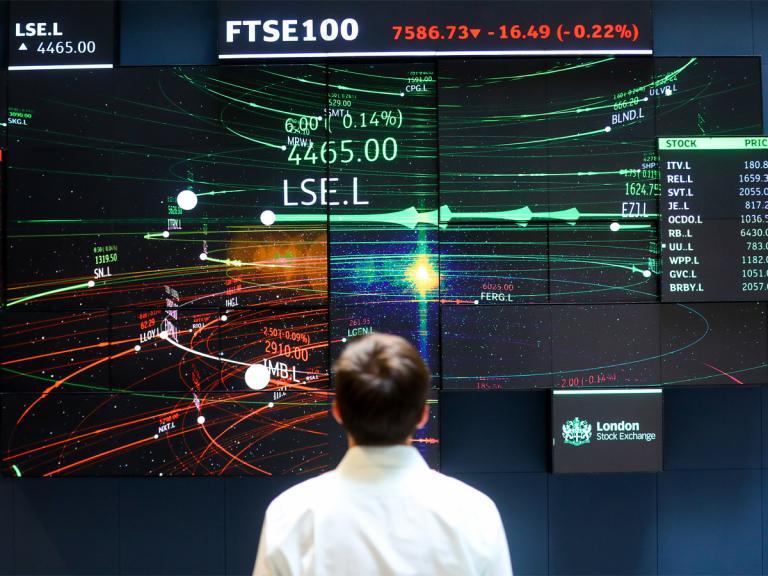European markets rebounded strongly yesterday, with the FTSE100 reversing all its Monday losses, along other markets in Europe, which also did well.
While some elements in government seem only too keen to lock down their populations, there does appear to be growing pushback for reaching for the lockdown lever every time things get difficult when infection rates start to rise.
It is slowly being recognised that lockdowns are a crude tool which inflict considerable economic, social and mental health damage, which some in government thankfully appear to be slowly beginning to recognise, and yesterday’s market rebound appears to be a reflection of that realisation.
There is also the additional factor that this reluctance to impose new strict lockdown measures this side of Christmas, might be down to the fact that even if restrictions were imposed there is little likelihood, they would be observed by increasingly pandemic weary populations.
Of course, that doesn’t mean we may not still see limited new restrictions announced in the days and weeks after Christmas, however it does appear that the case against lockdowns is finally starting to be heard.
US markets also enjoyed a decent rebound reversing a sequence of three days of losses led by the Russell 2000 and the Nasdaq.
Today’s European market open looks set to build on the rebound seen yesterday, with the main focus today on the final iterations of UK and US Q3 GDP, along with US Consumer Confidence for December.
Since the previous iteration of UK Q3 GDP, the pound has come under pressure, largely due to concerns over how the current raft of restrictions will impact on the Q4 GDP numbers, when they get released at the end of January next year.
Nonetheless we still saw a significant slowdown in Q3, from the better than expected 5.5% rebound seen in Q2.
This shouldn’t have been too much of a surprise given the delay to reopening the economy, however it was still disappointing when the numbers came in below expectations of 1.5%, falling back to 1.3%.
It is true that the so-called pingdemic caused a significant amount of disruption, however you would still expect to see more resilience in the wake of the relaxation of those restrictions.
Private consumption is still expected to remain resilient at 2%.
Manufacturing, particularly new car production was, and is likely to remain a drag due to the chip shortages, along with maintenance shutdowns in the North Sea. Expectations are for there to be no change to the previous adjustment of 1.3%.
Moving to the US, the previous iteration of US Q3 GDP saw a modest upward revision from 2% to 2.1%. This isn’t expected to change in today’s final adjustment. It was widely expected that the US economy would slow in Q3 from the 6.7% in Q2, however instead of slipping to 2.6%, it slipped back to 2%.
There have been a multitude of reasons for this slowdown, notwithstanding a combination of rising delta variant cases, weaker demand, and supply chain disruptions acting as a brake on the economic rebound during the quarter.
One notable takeaway from the first two quarters of this year has been the resilience in personal consumption which rose 11.4% in Q1 and 12% in Q2.
This slowed sharply in Q3 to 1.7%, which was still slightly better than the 0.9% expected but was still indicative of how higher prices and falling consumer confidence are starting to affect demand in an economy that is extremely price sensitive where consumers are concerned.
As far as Q4 is concerned consumer confidence is likely to be key and here it's been fairly stable the last three months, and is expected to move modestly higher from 109.50 to 111.00, indicating a US consumer, that remains cautious as virus and hospitalisation rates rise across an increasing number of US states.
EUR/USD – currently becalmed between resistance at the 1.1385 area and last week’s highs, and the lows last week just above 1.1200. The 1.1185 November lows are the main support area, along with the June 2020 lows at the 1.1160 level. A move through 1.1420 argues for a move back to the 1.1520 level.
GBP/USD – still finding a decent base just below the 1.3200 area with the key support at 1.3160. We still need to see a move back above last week’s high at 1.3380 and move through 1.3400 to stabilise, and argue for a move towards 1.3500.
EUR/GBP – failed at the 0.8560 area and 200-day MA yesterday. We have support at the 0.8480 area, as well as last week's low at 0.8450.
USD/JPY – moved back towards the 114.30 resistance area yesterday. We need to break above 114.30 to target a move towards 115.00. We now have support at the 113.20 area, as well as the 112.50 level.





